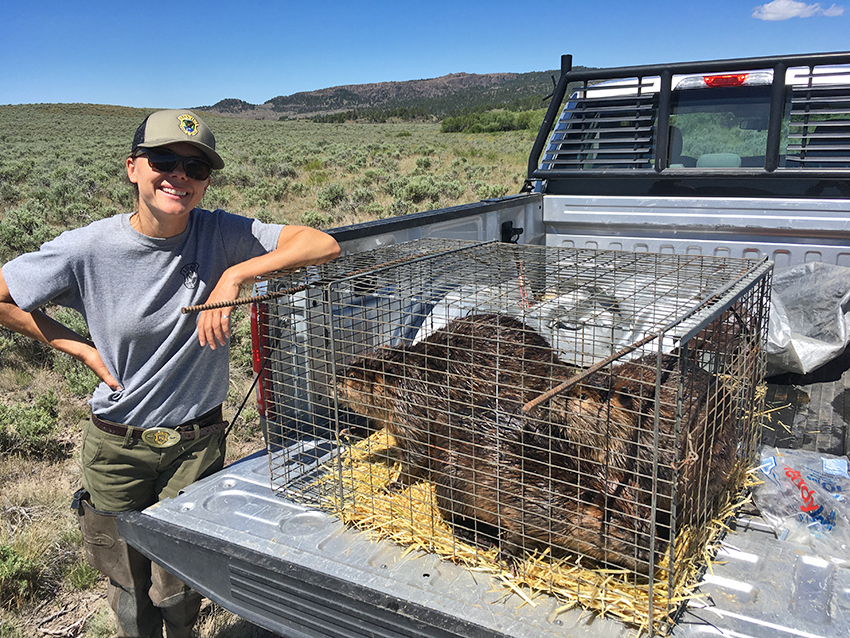Forecasting the Future
of the Shooting Sports Industry
Major weather events make for great television stories. In the early part of my career, I worked in television as a reporter and anchor. And from time to time, I’d report on tornados, massive snowstorms or flooding events.
Fortunately, I was never an actual weather forecaster. And praise the Lord for that. It’s a running joke in newsrooms — though maybe even more so among the public — there’s no professional in America who’s paid more money to be wrong more often.
Seriously, have you ever watched a television weather forecaster tell you tomorrow it’s expected to rain and then you show up with an umbrella only to see the sun shine all day? Or maybe the forecaster predicted a massive snowstorm and all you had were flurries?
Even though weather modeling and prediction is technically a science, it can at times be a very inexact science. Why? It’s because there are simply too many variables that go into making those “scientific predictions.” The results are often weather models that look silly or weather forecasters who look even more silly. It’s not a job for people with thin skin.
How, then, are we to look at something like the shooting sports industry and try to make predictions about what the future will hold? If weather forecasters have as much trouble as they do when using actual science, how can we hope to understand a market as large as the shooting sports industry?
Making An “Educated Estimate”
Well, in truth, we can’t be certain about anything, but we can make some educated estimates. There are many things industry members can look at and evaluate in making predictions about the future. I asked two of our distributor members to use some gut instinct, intuition, their many years of experience — along with any and all data available to them, including NASGW’s own SCOPE data — to share some insights with readers about what they see on the horizon for 2022.
Interviewed for this article were Chris DiCenso, president of Camfour Inc., and Jeff Pugh, VP of sales at Iron Valley Supply Co.
While Pugh believes the market will remain rather similar to this past year, DiCenso is anticipating a drop, maybe as much as 15%–20% in overall market conditions with the belief demand simply won’t sustain the record levels we’ve been seeing.
Of course, there’s a small caveat to DiCenso’s prediction: “This is with the assumption COVID doesn’t get out of control and there are no ‘socially motivated’ events or riots,” he noted.
During times like these, it’s easy to stop looking at ways to improve. But we have to continue to improve processes and product selection to better serve our dealer network.
Jeff Pugh, VP of Sales Iron Valley Supply Co.
Pugh agrees, but is concerned about the political environment and any hint of success in passing stricter gun regulations, because that could change the outlook dramatically and rapidly. It’s why he’s hedging his bets on a somewhat flat market. Unfortunately — as readers have seen across the country — cities, counties and states are racing to see who can pass the most gun restrictions. Even if eventually overturned in courts, these attempts at regulation do have an oversized impact on what the market does.
We’ve seen it time and time again, nothing sells guns faster than the threat of additional regulation. There’s a reason why former President Obama is known as the greatest gun salesman of all time. Based on early political movements, it appears President Biden is working hard to strip Mr. Obama of the moniker.
“I also think availability of hard-to-get products such as ammunition and revolvers will be a factor,” added DiCenso about how the market comes into focus in the new year. “If the manufacturers produce a lot early in 2022, demand will be satisfied early — therefore decreasing demand.”
Preparing To Pivot
When we analyze our NASGW SCOPE data from late 2021, it’s evident the channel is starting to catch back up to demand — DiCenso could be on to something. As distributors get ready for a more normal, or possibly slower year ahead, they’re pivoting to focus on thinking very strategically about what to do to be prepared.
“We are adding salespeople (at Iron Valley Supply),” said Pugh. “And we’re focused on warehouse efficiencies and product selection.”
At Camfour, it’s much the same. “We’re focusing on inventory turns and weeks on hand and making sure we get ahead of slower moving product,” DiCenso said. “Unfortunately, since we don’t know when we’re going to receive product, or how much, it’s often a guessing game.”
While not necessarily the largest determining factor on the overall market, distributors’ challenges in finding labor continues to be a thorn in their side. Because the labor issues are nearly universal, up and down the channel, it could certainly become a much bigger concetrn for the market as we progress into 2022.
“In 2021, we scheduled a lot of overtime due to labor shortages,” said DiCenso. “We’ve also had to raise warehouse labor rates over 20% just to get people to apply.”
Pugh said Iron Valley Supply was forced to increase warehouse pay as well, to compete with local companies and to fight off competition from Amazon as they continue to build warehouses across the country.
“During times like these, it’s easy to stop looking at ways to improve,” said Pugh. “But we have to continue to improve processes and product selection to better serve our dealer network.”
This focus on the customer, and in particular, the strong communication needed to work closely with those customers so they understand the ever-changing market, will prove essential to success, no matter what the industry sees in the coming year.
“Our market will always have a degree of uncertainty,” noted DiCenso. “To mitigate those uncertainties, the industry needs a much better forecasting and demand planning process and it typically begins with the customers with whom the dealer has the most contact. For this reason, I’d encourage all dealers to link to the NASGW SCOPE database so manufacturers can receive a data-driven history of sales.”
Data is king. And data wears an even bigger crown in a more uncertain market.
The Only Certainty
When you boil it all down, no one can say for certain what the coming year will bring. We’ve all come to realize massive swings driven by the political winds of change are here to stay. It’s important to do your best to understand supply-and-demand trends, stay in close contact with distributor and manufacturer partners and finally, lean heavily on data to understand what’s happening and then use that data to react as quickly as possible.
It’s important to do your best to understand supply-and-demand trends, stay in close contact with distributor and manufacturer partners and finally, lean heavily on data to understand what’s happening and then use that data to react as quickly as possible.
Better processes lead to better decision-making, and better reporting and management tools lead to better sales. If you review your assumptions for the coming year, and project how those assumptions could have both positive and negative impacts, you’ll be ready for whatever comes your way and for whatever impacts the supply and demand in the channel.
And take heart in knowing even if you’re wrong, you’re probably still not going to be as wrong as your local weather forecaster.
NASGW SCOPE is built in partnership with NASGW wholesalers to provide an aggregated source of sales and inventory data — with resources available for manufacturers, distributors and retailers. For more information on NASGW SCOPE, visit nasgwscope.org.
Kenyon Gleason is the president of the National Association of Sporting Goods Wholesalers (NASGW).





